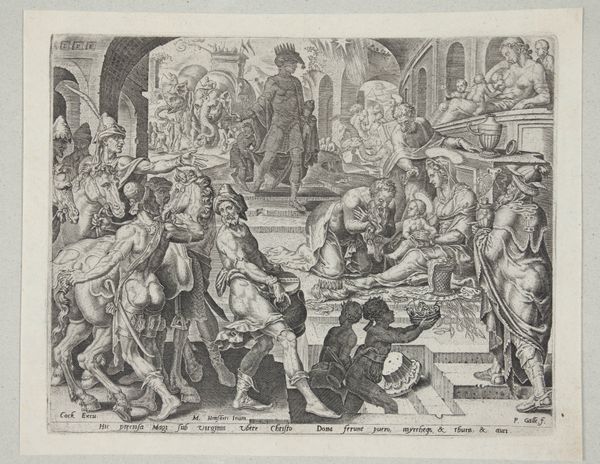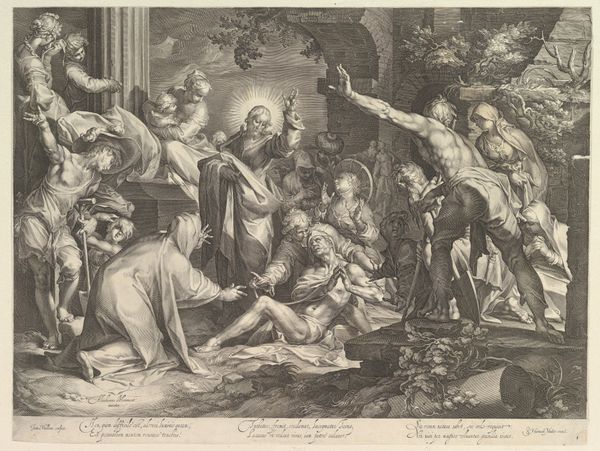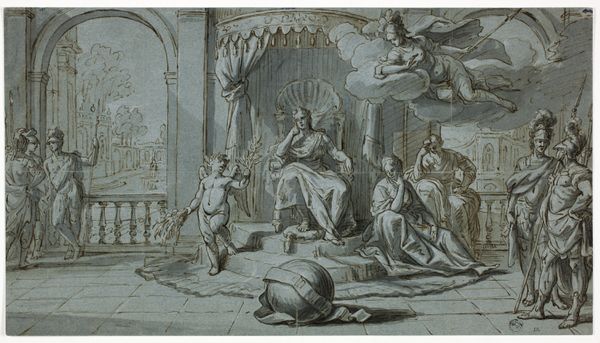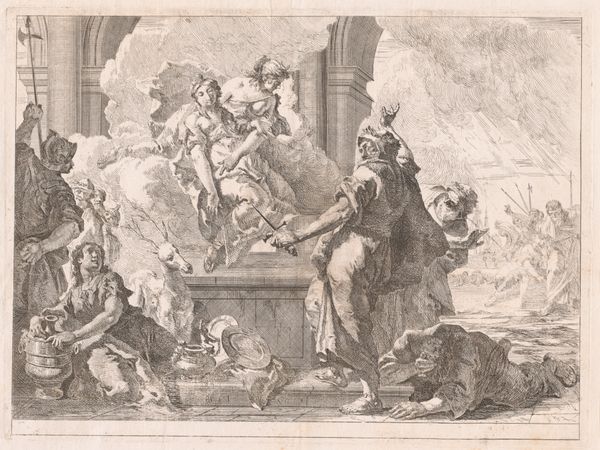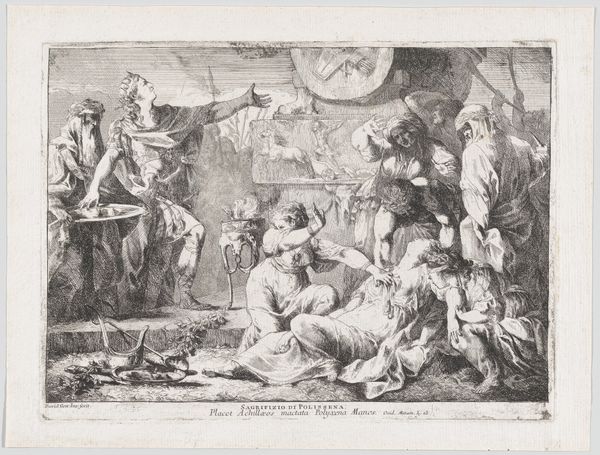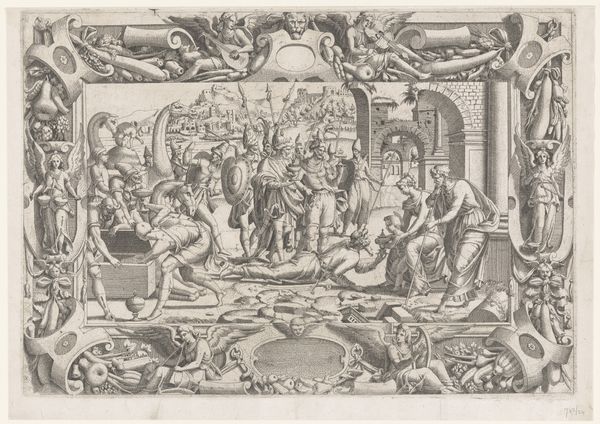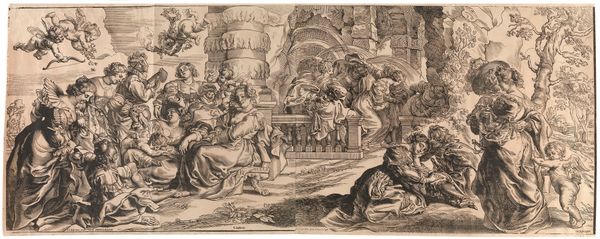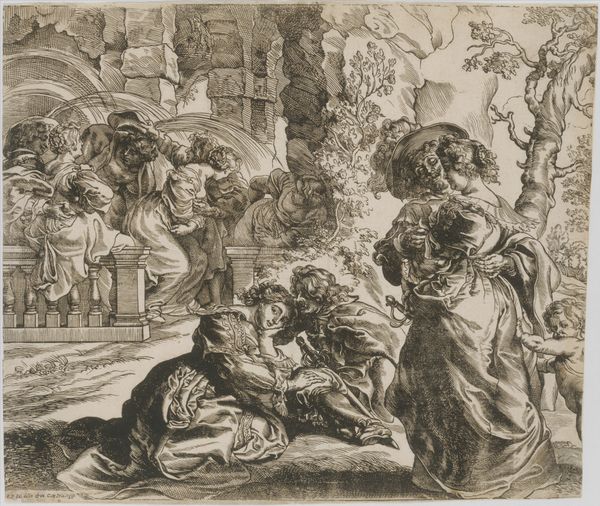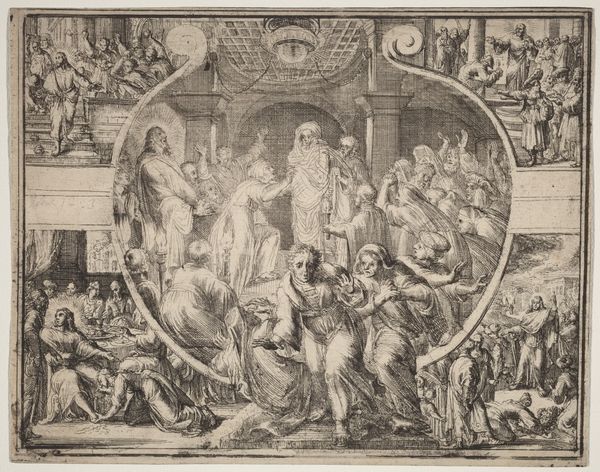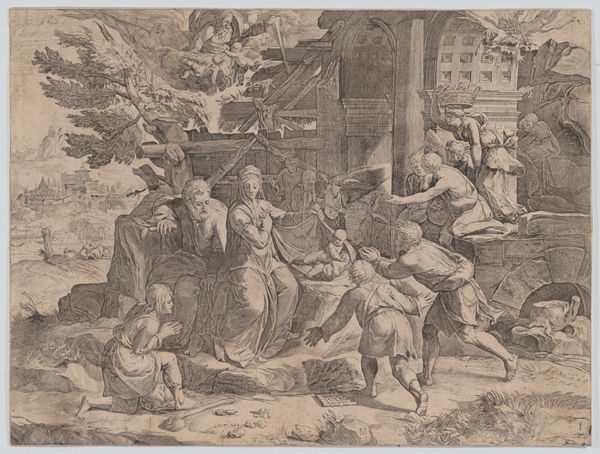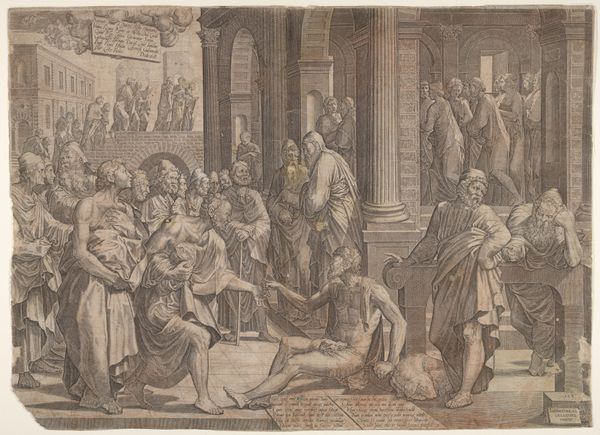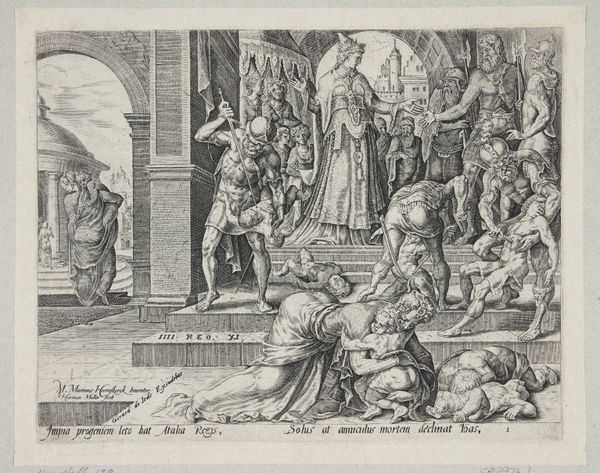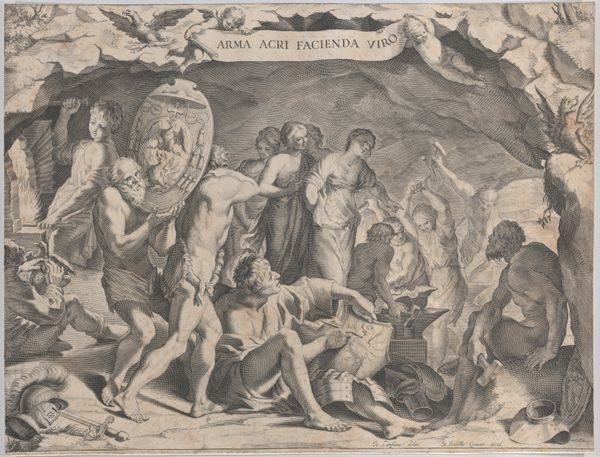
drawing, print, engraving
#
drawing
#
allegory
# print
#
mannerism
#
figuration
#
history-painting
#
engraving
Copyright: Public Domain
Editor: This is "Lament of the Art of Painting (Upper Half)" created by Cornelis Cort in 1579, currently held at the Metropolitan Museum of Art. It’s an engraving – densely packed with figures, and honestly, it feels rather melancholic, like a grand, almost operatic, farewell. What story do you think Cort is trying to tell here? Curator: It does feel like a stage, doesn't it? A stage for a grand allegorical drama. Think of it as a Mannerist meditation on the challenges faced by art itself. Cort, through the eyes of an artist working in the late 16th century, probably felt that art was losing its way, perhaps too focused on mere technical skill and less on the profound, emotional impact that painting should possess. What clues do you see in the imagery? Editor: I see lots of classical figures – gods and goddesses. And everyone looks so… worried? There's also this framed painting within the print. Is that significant? Curator: Precisely. The gods represent the established order, the weight of classical tradition. The frame within the frame is the artistic field of battle, let's say. Notice the chaotic, almost violent scene depicted there, mirroring perhaps, the turbulence Cort felt about contemporary art practices. It is like a meta-commentary. Don't you feel like there is chaos on a canvas *on* this canvas? Editor: That makes sense. So it's not just about painting in general, but a specific lament about where painting was heading at the time. It’s surprisingly self-aware, in a way. Curator: Exactly! It is a lament *and* a mirror. Maybe every generation of artists feels a similar anxiety? But I suspect Cort turned it into art with a rather impressive density and drama! It shows that anxieties are old. Editor: I will not look at historical paintings in quite the same way again. Thanks for untangling this allegory for me.
Comments
No comments
Be the first to comment and join the conversation on the ultimate creative platform.
